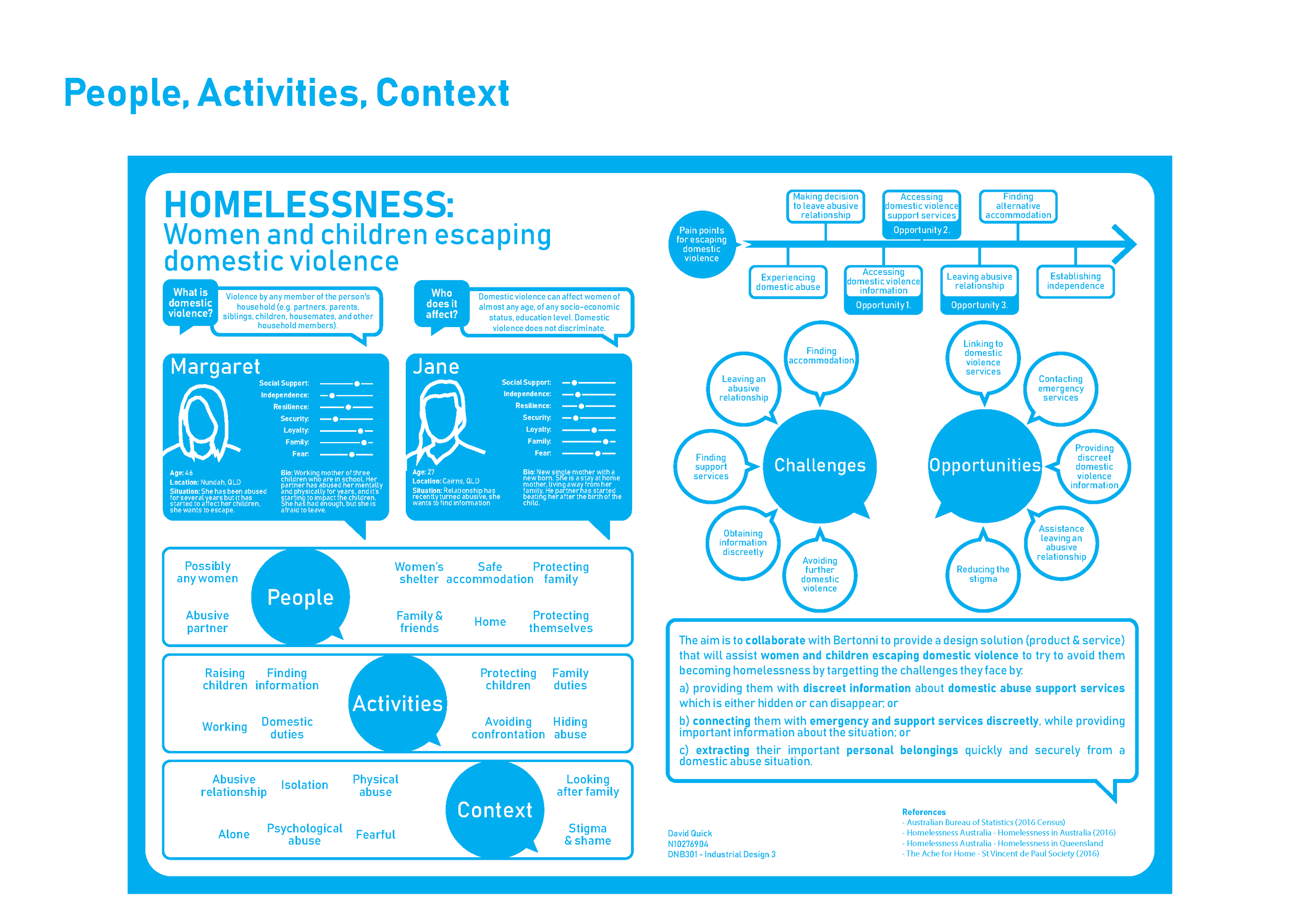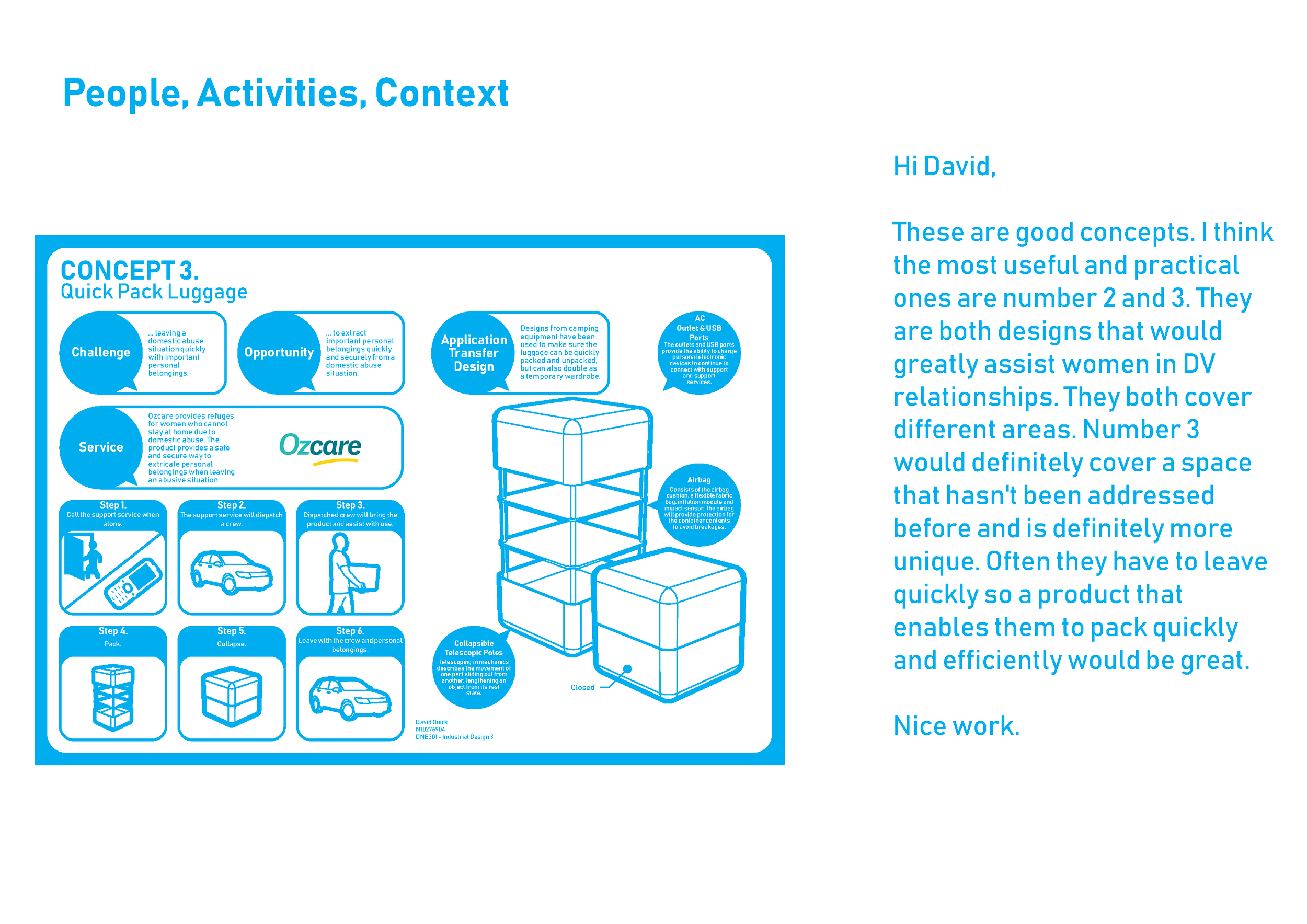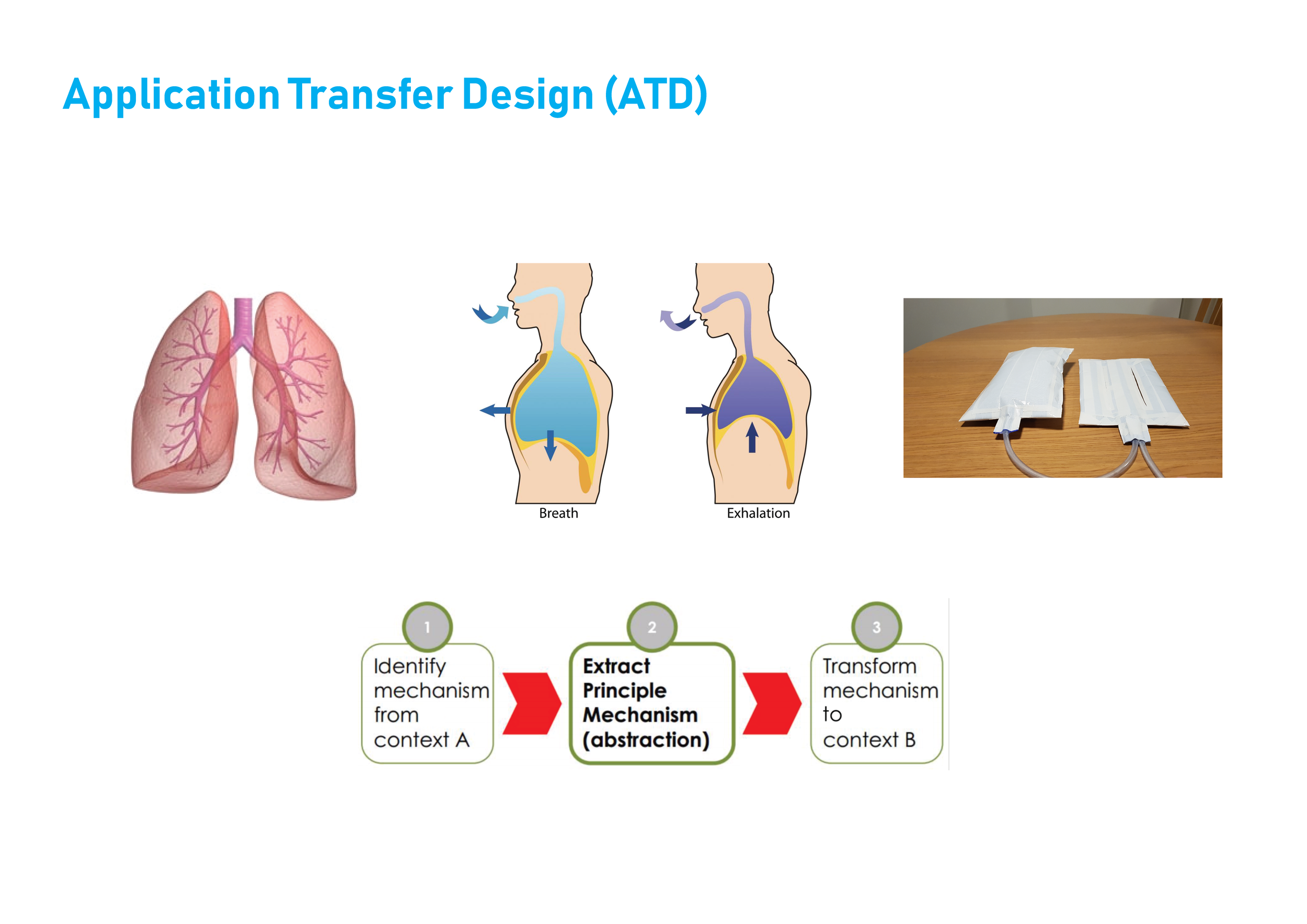
Quick Pack Luggage
During semester 1 of 2019 we were tasked with designing a product that could help address one of the leading factors contributing to homelessness. I chose to address domestic violence as one of the leading causes of homelessness. We were also tasked with incorporating Application Transfer Design (ATD) into the design. ATD is where the principle from something it taken and incorporated into the design.
I developed the quick pack luggage. A suit case with a telescoping lid and inflatable cushioning and shelves designed to protect fragile objects while being packed quickly and without care.
The ATD incorporated into the quick pack luggage was the principle underpinning the functioning of the human lungs, the inflation and deflation of the lungs due to the change in pressure of the diaphragm.
The model was created using paper, glue and string. The analogue renders were created using pigment liners, Copic markers and fineliners. The presentation material was created using Adobe Illustrator.

An analogue render of the final design, with the design in the closed position. Created using copic markers on bleedproof paper.

An analogue render of the final design, with the design in the open position. Created using copic markers on bleedproof paper.

The final model (1:4), with the model in the closed position. Created using paper, card, string, and glue.

The final model (1:4), with the model in the open position. Created using paper, card, string, and glue.

The final model (1:4), with the model in the closed position, handle extended. Created using paper, card, string, and glue.

The final model (1:4), with the model in the closed position, handle extended. Created using paper, card, string, and glue.

The proof of concept for the internal case cushions, functioning like human lungs (ATD). This image shows the tubes forcing air in and out of the bags.

The proof of concept for the internal case cushions, functioning like human lungs (ATD). This image shows the main top or bottom cushion on the left, and the separating layer cushion on the right.

The proof of concept for the internal case cushions, functioning like human lungs (ATD). This image shows the inflated shelving.

The proof of concept for the internal case cushions, functioning like human lungs (ATD). This image shows the inflated cushion.

The presentation slideshow (1 of 16). Cover Slide.

The presentation slideshow (2 of 16). Slide 2 introduces the problem of homelessness, one of the major causes is domestic violence.

The presentation slideshow (3 of 16). Slide 3 presents the initial concept design, taken from the initial presentation.

The presentation slideshow (4 of 16). Slide 4 shows the various hero images of the final design, in the closed position (left) and open position (right).

The presentation slideshow (5 of 16). The final design shown in context.

The presentation slideshow (6 of 16). Slide 6 shows the ergonomic data informing the usability of the final design.

The presentation slideshow (7 of 16). Slide 7 shows the dimensions of the final design in the closed position.

The presentation slideshow (8 of 16). Slide 8 shows the dimensions of the final design in the open position, and compared to the user.

The presentation slideshow (9 of 16). Slide 9 shows the how application Transfer Design (ATD) applying the principle of the human lungs to the to cushions within the suitcase.

The presentation slideshow (10 of 16). Slide 10 shows the features of the final design.

The presentation slideshow (11 of 16). Slide 11 shows more features of the final design.

The presentation slideshow (13 of 16). Slide 13 shows the services, system, and business model of for the final design.

The presentation slideshow (14 of 16). Slide 14 shows the materials and manufacturing details for the final design.

The presentation slideshow (15 of 16). Slide 15 shows possible additional applications of the final design.

The presentation slideshow (16 of 16). Slide 16 shows the design process used to develop the final design.

